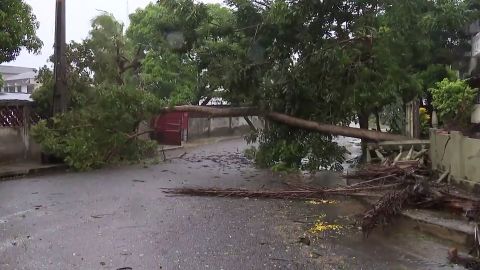Cyclone Freddy battered central Mozambique on Sunday after making landfall for a second time in a month, breaking records for the duration and strength of tropical storms in the southern hemisphere.
Communications and electricity supply in the storm area have been cut so the extent of the damage and number of casualties were not clear.
More than 171,000 people were affected after the cyclone swept through southern Mozambique last month, killing 27 people in Mozambique and Madagascar. More than half a million are at risk of being affected in Mozambique this time, according to the UN Office for the Coordination of Humanitarian Affairs (OCHA).
UNICEF said in a statement that Freddy made landfall with sustained winds of nearly 150 kilometers per hour (93 miles per hour), causing “severe damage and cutting off children and families from critical services.” After passing the port town of Quelimane, the storm continued inland towards the southern tip of neighboring Malawi, satellite data showed.
However, the national power company Electricidade de Moçambique said that by mid-afternoon electricity had been restored in most areas, with the exception of Milange, Lugela, Maganja da Costa, Namanjavira and parts of the city of Mocuba.
“The wind was very strong into the night … There is a lot of destruction, trees fallen down, roofs blown off,” Guy Taylor, the UNICEF chief of advocacy, communications and partnerships for Mozambique, told Reuters by satellite phone from Quelimane. He had no word yet on casualties or numbers of displaced.
“It’s potentially a disaster of large magnitude, and additional support will be needed,” Taylor said, adding that heavy rains were continuing to fall.

In Malawi, authorities were bracing for the cyclone to pass near the southern tip of the landlocked country by evening, bringing torrential rains and flooding, the department of meteorological resources and climate change said in a statement.
Freddy developed on February 6 off the northwest Australian coast, before tracking thousands of miles across the South Indian Ocean towards southeast Africa, affecting the islands of Mauritius and La Réunion on the way.
The storm hit the eastern coast of Madagascar on February 21 before slamming into Mozambique a few days later, bringing torrential rain, destructive winds and flooding which has destroyed houses and affected nearly 2 million people.
It then looped back out towards the Mozambique Channel, gaining energy from the warm waters, and headed toward the southwestern coast of Madagascar.
